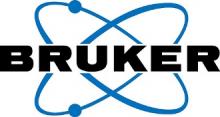| 9:00 AM | 6:00 PM | Badge Pick-Up & On-site Registration |
| 9:00 AM | 9:30 AM | Morning Coffee + Networking |
| 9:30 AM | 9:45 AM | Morning Remarks: Juan de Pablo, Executive Dean of the NYU Tandon School of Engineering |
| 9:45 AM | 10:30 AM | Keynote: Raghusimha Sudhakara, Con Edison "Pivotal Role of Storage in the Clean Energy Transition" Read more Today, as the Energy Transition accelerates the grid towards renewable energy sources, the significance of energy storage becomes increasingly evident. Energy Storage paves the way to a net zero energy system.
Energy storage is crucial for balancing supply and demand, mitigating the intermittency of renewable energy sources, and ensuring the stability and optimization of the grid. And while investments in energy storage are projected to grow significantly over the next decade to meet clean energy objectives, these efforts are primarily driven by the need to integrate renewable resources onto the grid to ensure resource adequacy. Proactive distribution investments will also be necessary to support grid flexibility necessary to accommodate the increasing complexity of customer demand and variability of energy supply and demand.
As more sectors of the economy and daily life become reliant on the grid, and the grid shifts to a more dynamic and mature operational state, it is critical to enhance its reliability to support society for generations to come. Robust Utility integrated storage aimed at effective grid management and optimization combined with market storage that will provide market services and balance wholesale system needs will be essential to help underpin the grid and energy system of the future. Read less |
| 10:30 AM | 12:30 PM | Session 2: Transportation
Session Chair: Jae Chul Kim, Stevens Institute of Technology |
| 10:30 AM | 11:00 AM | Invited Speaker: Young Suk Jo, Amogy While global energy transition is underway in various forms of decarbonization, there is little solution available for heavy industry & heavy-duty transportation. Amogy offers ammonia-based, emission-free, high-energy-density power solutions to decarbonize transportation for a sustainable future, accelerating the global journey towards Net Zero 2050. To date, Amogy’s scalable ammonia-powered, zero-emissions energy system has been demonstrated with success in a drone, heavy duty tractor, class 8 semi-truck. Amogy is currently retrofitting a 1 MW tugboat to demonstrate the world’s first ammonia-powered vessel. In this talk, Amogy's vision of decarbonization as well as technology focusing on catalyst, reactor, and system layout will be discussed. Read less |
| 11:00 AM | 11:30 AM | Invited Speaker: Amy Marschilok, Stony Brook University |
| 11:30 AM | 11:45 AM | Submitted Abstract: Edina Sic, Bruker BioSpin "Understanding Battery Chemistry with Magnetic Resonance: A Path to Next-Generation Energy Storage" Read more The transition from fossil-fueled vehicles to electric transportation requires advancements in battery technology to meet the demands of rapid charging, enhanced energy density, and longevity. To address these challenges, it is critical to understand the intricate chemical processes that occur within batteries. This presentation delves into the potential of Magnetic Resonance techniques, specifically Nuclear Magnetic Resonance (NMR) and Electron Paramagnetic Resonance (EPR), to probe these mechanisms at the molecular level, providing unmatched insights into the chemical processes of battery systems.
NMR and EPR offer unique advantages in elucidating the structure, dynamics, and interactions of battery components under operational conditions. In this talk, we will discuss how these techniques can be applied to investigate electrolytes, electrodes and interfaces. We will explore how Magnetic Resonance can shed light on key issues like capacity fade, dendrite formation, and thermal runaway, as well as exploring new materials for next-generation batteries.
By providing a deeper chemical understanding, Magnetic Resonance can guide the development of safer, more efficient, and longer-lasting batteries. This presentation will provide a comprehensive overview of current research applications and future directions, highlighting the potential of NMR and EPR in both academic and industrial battery R&D settings. Read less |
| 11:45 AM | 12:00 PM | Submitted Abstract: Jack Yoh, Seoul National University "Prediction of Thermal Runaway in Ultra-High Nickel Li-Ion Batteries Using Thermal Explosion Theory" Read more With the severity in cases of fire accidents involving electric vehicles utilizing high energy density battery materials, the present research deals in enhancing the proposed thermal explosion theory for lithium-ion batteries to acknowledge the thermal runaway (TR) characteristics under non-linear passive and active air-cooling conditions. In our earlier theory, a constant value of heat transfer coefficient (h) was utilized for Newton’s law of cooling (Heat Loss Term) and evaluation of equilibrium (TE) and maximum (TM) temperature was achieved stating that TR occurs when TE>TM. The present model identifies a cut-off Reynolds number (Re) under forced convection beyond which TR is inevitable. Samples of high-capacity Li-ion battery with 91% Nickel-content were prepared, utilizing Argon glove-box to avoid contamination. Heat generated during thermal decomposition of battery cell using differential scanning calorimetry (DSC) is compared with the heat loss conditions (Re=4~388) to highlight the necessary cooling condition to avoid TR and ensure battery safety. For practical operational conditions, the state of charge (SOC) and heating rate are varied. The results suggest that Re<4~40 have lower h than realistic non-linear natural-convection by around 30% at 100% SOC. For Re>234, TE exceeds TM leading to TR although the cooling effect is increased for 100% SOC at 10 oC/min heating rate. A cut-off Re shows a quadratic correlation with heating rate for a particular SOC. The present work suggests that beyond cut-off Reynolds number, the cooling effect can also become a factor resulting in battery fire and explosion incidents. Read less |
| 12:00 PM | 12:30 PM | Invited Speaker: Chong Liu, University of Chicago "Understanding competitive ion behavior for lithium separation and cathode synthesis" Read more Achieving the net-zero emissions goal requires a significant increase in electricity production from renewable technologies and widespread electrification of the transportation sector. These pressing challenges highlight a substantial gap between growing manufacturing demand and current production capacity, necessitating innovative solutions to secure resource supplies and enhance manufacturing capabilities. Ions, as the simplest unit for separation and synthesis, are critical to control to enable transformative technologies. In this talk, I will introduce our group’s research in understanding and manipulating ions at electrified interfaces for separation and manufacturing. Specifically, I will introduce electrochemical intercalation as a platform method for lithium (Li) extraction. By studying the complex behavior of two model hosts—olivine-type and layered oxides—during the co-intercalation of competing ions, we have developed several strategies to enhance Li selectivity. Our understanding of ion behavior also provides important insights for enabling predictive ion-exchange-based synthesis. Read less |
| 12:30 PM | 1:30 PM | Lunch |
| 1:30 PM | 3:00 PM | Session 3: Decarbonization Pathways
Session Chair: André Taylor, NYU |
| 1:30 PM | 2:00 PM | Invited Speaker: Debra Rolison, U.S. Naval Research Laboratory (NRL) "Two architected electrodes are better than one! (Improving zinc-based alkaline batteries)" Read more Moving toward substantive decarbonization will require energy storage. Not just batteries, but this age-old technology will play a key role, especially if the battery components are more sustainable. That means aqueous electrolytes and active materials composed of low supply–risk elements (i.e., not cobalt). Our team at the Naval Research Laboratory designs pore–solid nanoarchitectures that capture all of the requisite transport functions for high performance in electrochemical energy storage, molecular mass transport, ionic/electronic/thermal conductivity, and electron-transfer kinetics. The lessons we learned from 20 years of fundamental research into the operational and design characteristics of energy-relevant nanoarchitectures led us to the sponge form factor. Zinc sponges are monolithic, scalable objects that lower and distribute the current density within the porous electrode interior during charge–discharge cycling in alkaline batteries such that cell-shorting dendrite-formation cannot occur. With this breakthrough, we are protyping the family of zinc-based rechargeable alkaline batteries: nickel–3D zinc (electrified multi-wheeled vehicles), silver–3D zinc (time for electric trains!), MnO₂–3D zinc (grid storage), and even rechargeable 3D zinc–air. Read less |
| 2:00 PM | 2:30 PM | Invited Speaker: Marcelo Carmo, Nel Hydrogen "Water Electrolyzers at NEL – How can R&D make green-H2 competitive at scale?" Read more Water electrolyzers are today of worldwide strategic importance for the deployment of green hydrogen as an energy carrier, and the ultimate integration of stochastic renewable energies into the electrical grid at scale. Targets for the total cost of ownership of hydrogen have been constantly revised, but values around $2 per kilogram of H2 are generally accepted to reach parity with other energy conversion and storage strategies. However, further advancement of electrolyzers while maintaining durability and robustness of its cell/stack components is still needed. This can only be accomplished through focused research and development efforts that address efficiency, degradation, and cost aspects of the technology. Read less |
| 2:30 PM | 3:00 PM | Invited Speaker: Paul Albertus, Maryland Energy Innovation Institute, University of Maryland "Early-stage evaluation of the safety of new battery chemistries for transportation and grid applications" Read more There are numerous new battery chemistries under development for both transportation and grid applications, including solid-state Li metal batteries, Na-based batteries, and numerous others. A challenge for the evaluation and development of these new chemistries is that battery safety is typically only assessed once a multi-Ah cell in a commercial format is developed, which often takes many years and investments to achieve. This talk will discuss approaches to assess the safety of new battery chemistries at an early, materials-scale stage, helping to spur understanding and innovations in the safety of new battery chemistries even before a commercial prototype is available. Read less |
| 3:00 PM | 3:30 PM | Coffee Break |
| 3:30 PM | 5:45 PM | Session 4: Grid-level Storage
Session Chair: Sanjoy Banerjee, CCNY/Urban Electric Power |
| 3:30 PM | 4:00 PM | Invited Speaker: Dan Steingart, EEE/ChemE/CEEC, Columbia University When is a short bad, and when is it really bad? Let’s discuss. Read less |
| 4:00 PM | 4:30 PM | Invited Speaker: Vincent L Sprenkle, Pacific Northwest National Laboratory - PNNL
"Accelerating Grid Storage Solutions – ROVI and GSL" |
| 4:30 PM | 5:00 PM | Invited Speaker: Eugene Beh, Quino Energy "Ton-Scale Production and Cycling of Quinones as a Drop-In Replacement for Vanadium in Commercial Flow Battery Systems" Read more We report a zero-waste, continuous flow electrosynthesis process to produce a high-performance, long lifetime organic flow battery negolyte at the ton scale. The yield and purity are even higher than the equivalent chemical process and no further purification or downstream processing is required, which greatly simplifies scaleup, permitting, and implementation. Moreover, the as-produced material can be immediately cycled as a drop-in replacement for vanadium in conventional flow battery hardware with minimal modification. Together, the low cost and rapid scalability of the organic electrolyte represents a practical way for the flow battery industry to break below the cost floor imposed by vanadium and stay competitive with lithium-ion batteries. Read less |
| 5:00 PM | 5:30 PM | Invited Speaker: Richard May, Standard Potential "Sodium-ion Batteries for Safe and Sustainable Grid Storage" Read more Sodium-ion batteries are a rapidly maturing technology, addressing a critical need for safe, sustainable energy storage. Here, we discuss current industry trends and explore the possibility for sodium-ion technologies to change how battery systems are manufactured and deployed. Read less |
| 5:30 PM | 5:45 PM | Submitted Abstract: Yuxi Song, National University of Singapore "A Hybrid Redox-Mediated Zinc-Air Fuel Cell for Scalable and Sustained Power Generation" Read more Zinc-air batteries (ZABs) have recently attracted considerable attention due to their high energy density and safety, low noise, and environmental friendliness. However, the capacity of mechanically rechargeable ZABs was limited by the zinc anode, which can be cumbersome to replace after each full discharge, while electrically rechargeable ZABs suffer from issues such as low depth of discharge, zinc dendrite and dead zinc formation, as well as sluggish oxygen evolution reaction, etc. To address these issues, we report a hybrid redox-mediated zinc-air fuel cell (HRM-ZAFC) that utilizes a phenazine derivative, 7,8-dihydroxyphenazine-2-sulfonic acid (DHPS), as the redox mediator in the anolyte. With the redox-targeting reaction between DHPS and zinc loaded in a fuel tank, the reaction of zinc is shifted from the electrode surface to a separate fuel tank, enabling decoupled fuel feeding and electricity generation. As a result, the system provides great operation flexibility and scalability for large-scale power generation applications. The DHPS-mediated ZAFC showed a superior peak power density of 0.51 W/cm2 and a continuous discharge capacity of 48.82 Ah with ZnO as the discharge product in the tank, highlighting its potential as a useful power generation system. Detailed mechanistic studies of the redox-targeting reaction between DHPS and Zn in alkaline conditions reveal that soluble [Zn(OH)4]2- is first generated, followed by the formation of Zn(OH)2 and ZnO precipitates when [Zn(OH)4]2- becomes saturated in the anolyte. Based on the comprehensive COMSOL simulations, future studies will be focused on the optimization of anode design for enhanced anolyte flow and consequently anodic current. Read less |
| 5:45 PM | 6:00 PM | Submitted Abstract: Scott Childers, Stryten Energy "The Exponential Increase in Power Demand and the Inevitable Renewable-Powered Grid Require Long-Duration Energy Storage" Read more U.S. energy needs have changed dramatically over the last few decades, and it is questionable whether our grid can manage these new demands. City populations are growing, creating a greater need and forcing the expansion of power grids. The data centers behind AI-powered technologies have significant power demands. And as more drivers switch to electric vehicles and hybrids, more electricity is needed for charging stations. Renewable energy sources are expected to double by 2050. The inherent variability of renewables brings challenges, such as imbalances in supply and demand, overloaded transmission systems and capacity challenges created during weather events. Long-duration energy storage systems (LDES) will be necessary to improve the efficiency, reliability and resilience of the grid by reducing power surges and balancing the load over time. The grid design will need to be transformed for distributed energy resources. With management systems, optimized energy management across a network can be achieved by leveraging the LDES for many purposes from peak shaving to frequency matching to safety controls. Vanadium Redox Flow Batteries (VRFB) are ideally suited for grid-connected applications. VRFB systems can function for more than two decades without the electrolyte losing capacity, complementing the lifespan of wind and solar installations. The electrolyte is also infinitely recyclable, making VRFB a sustainable energy storage technology. With so many properties that make VRFB systems a safe, reliable, and sustainable option, they’re a good fit for storing and deploying the vast levels of clean energy the U.S. will need to provide greater grid stability. Read less |

























